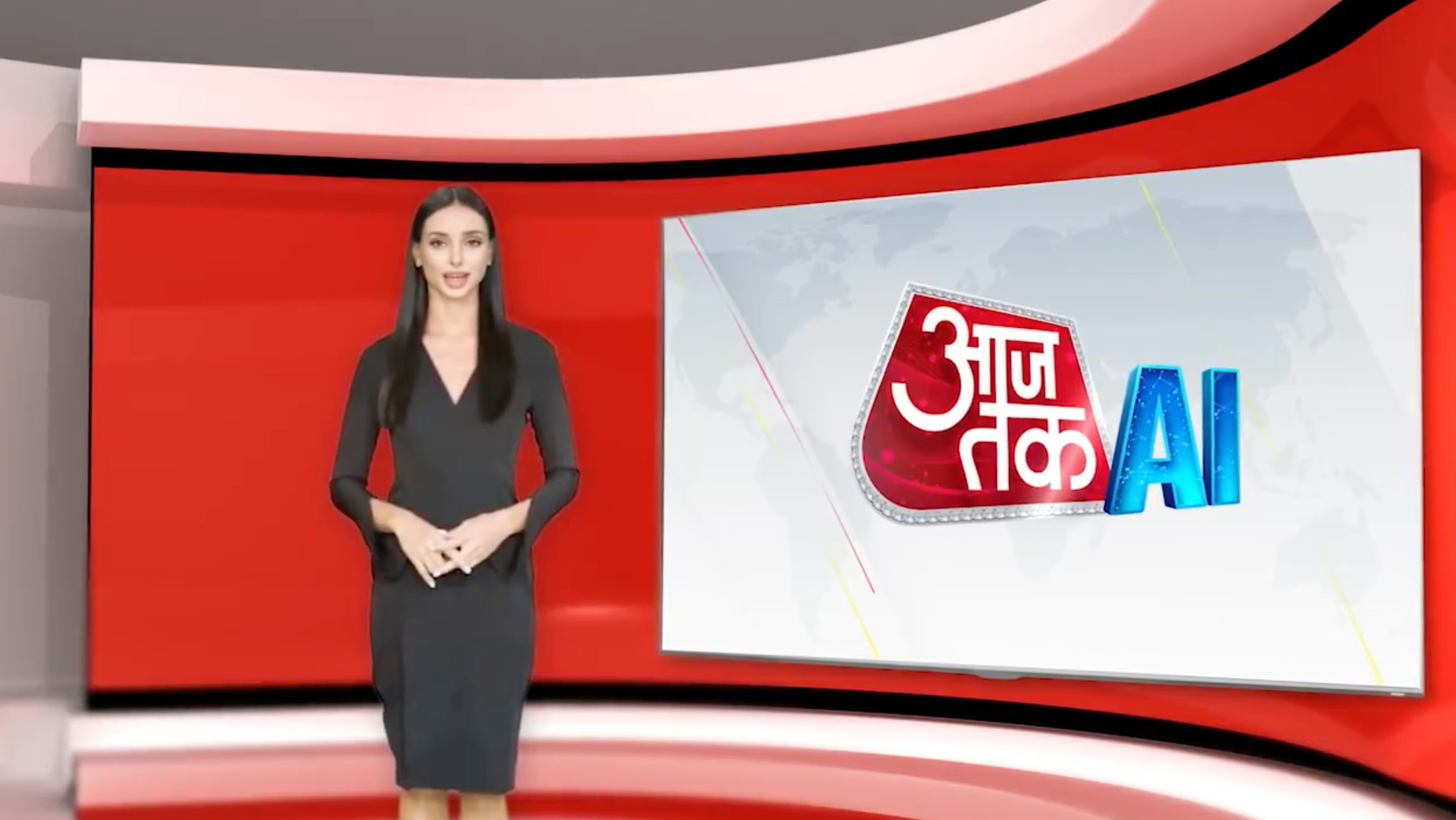
India’s AI newsreaders are multilingual, cost-saving and ‘never tired’. Can they replace humans?
- Two multilingual chatbots have popped up across two major news networks across India in three months as TV news presenters
- The rapid rise of such technology has some people worried about employment security, a lack of nuance in stories, and the sheer lack of a human element
Following Sana, Odisha TV in eastern India revealed its chatbot named Lisa that wears a sari, has dark-rimmed eyes and reads the headlines in Odia, the local language.
The chatbots delivered the news in a monotonous voice and made no hand gestures.

But they heralded a milestone in broadcasting TV and digital journalism, presenting news, weather forecasts and financial and sports updates all in real time without needing a break.
With two chatbots established as TV presenters within three months, the speed of change driven by AI has taken even experts by surprise. While they had expected the new technology to quickly impact industries such as financial services, information technology and healthcare, few expected it to take root in the media so quickly.
The uptake of AI in the media industry also contrasts sharply with the level of mobile phone penetration in India, where over half the population is without smartphones.
In a country with 22 official languages, the multilingual Sana and bilingual Lisa could make it much easier for Indians to consume news.
While Lisa currently speaks only in English and Odia, Sana can speak 75 languages, though she presents only in English, Hindi and Bangla for now.
Both India Today and Odisha TV say the chatbot presenters complement human presenters and journalists, and are not substitutes for their human counterparts.
Will world’s first global AI regulation summit ‘freeze out’ firms from Asia?
Often, after reading headlines, Lisa and Sana hand over to a human presenter who then facilitates a debate with panellists.
“It’s a question of more efficiency in the newsroom and enhancing the creativity of our staff by removing mundane and repetitive tasks. Sana can speak in multiple languages, switch between topics with ease and is never tired,” said Vivek Malhotra, head of marketing and strategy at India Today.
The view was echoed at Odisha TV. “Lisa is going to be a great partner. [It] does the jobs that are repetitive and data analytical, so newspeople can focus on new angles and more creative work,” said Jagi Mangat Panda, the channel’s managing director.
But work is under way to train the chatbots to conduct television debates. Mallhotra said Sana is undergoing training to facilitate a debate with both human and AI panellists.
“As a newsroom, we have to stay at the frontier of all new technologies, and so we will be experimenting and adopting all that AI has to offer,” he said.

Supporters of the AI news presenters point to the advantages of 24 hour news coverage, linguistic diversity, and the ability to process vast amounts of data – live election results or financial updates – at high speed.
But others expressed concern about employment security, a lack of nuance in stories, and the sheer lack of a human element.
Media experts such as Sevanti Ninan, who headed a portal that tracks and monitors media trends and press freedom, believe that on-the-ground reporting and investigative journalism remain safe from AI bots as they cannot replicate human observation and experience, for now.
“AI chatbots will save costs and they can be used for headlines, but I don’t see how they can replace a reporter out in the field asking questions. What they will do to the concept of star anchors is too soon to say,” she said.


